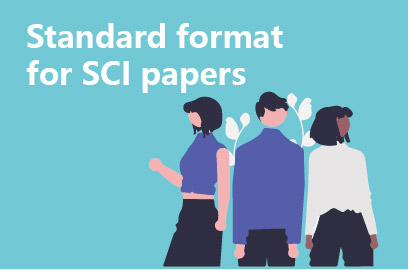SCI Title
The title should summarise the most important contents of the whole paper, be concise, appropriate and eye-catching, and should be short, generally not exceeding 20 words, and can be illustrated by subheadings.
Abstract and Keywords
The abstract should correspond to the Chinese “abstract”.
Use the third person, preferably written in the present tense.
“Title Summary” (Abstract)
Set to font: Times New Roman
Bold: centre: three; line spacing: fixed value 2 0 0 0;
Paragraph before, after the paragraph are automatic.
The body of the summary is set to indent the first line of each paragraph by 2 words (4 letters).
Font: Times new Roman, font size: small
Text layout
Text formatting nothing to say for sure are the times new Roman, font size according to different journals may have requirements but most of the ones I have encountered do not. English writing format is the first paragraph of each part of the first paragraph is not a space, this is the This is the basic of English writing, but there may be special cases where the first paragraph is also spaced out, after all, we are submitting a manuscript, according to the requirements of others. We are submitting a paper, so let’s go according to others’ requirements. Then try to differentiate the font size of the headings and subheadings from that of the text.
Formula format
formula is certainly to use mathtype to write, and then the general periodicals are formula centre brackets right-aligned, there are several ways to this You can go to their own Baidu, booth recommended the use of the definition of tabs. There are also journals of the formula left-aligned number right-aligned, which is very
simple, the usual table in the settings can be. Note that in the text of the formula to explain the time to refer to the journal is to use the equation or the abbreviation Eq.0.
Pictures and Tables
Pictures are centred, but some diagrams are required to be centred, some are aligned at both ends or left, and Figure is the full name or abbreviation. Some journals require images and tables to be saved in a separate file, or listed after the text, or must be inserted in the appropriate place in the text. Some journals require images and tables to be saved as separate files, or to be listed after the text, or to be inserted into the text at the appropriate place, see the requirements in the Guide for Authors.
There are some things to note about tables. A three-line table is more formal for academic purposes, and a journal will require a three-line table. Acknowledgements
Acknowledgements
Acknowledgements can include grant numbers and author contributions, as well as conflicts of interest.
Nowadays, journals require a separate declaration of interests statement to be uploaded when submitting a manuscript.
declaration of interests statement
This is a conflict of interest.
The author’s contribution is also required to be uploaded separately as an author statement, where each author writes about his/her contribution to the article, and the type of contribution is provided by the journal in standardised terms, not in his/her own words. Click on the appropriate style in the Guide for Authors to see it.
Materials and Methods
(1)Subjects
(2) Experimental equipment: the name of the equipment, manufacturer, model and method of operation.
(3) Experimental materials: the name of drugs and reagents, composition, specifications, purity, source of factory time, batch number, concentration, dose, method of administration, route, the total amount of drug use
(4) Experimental methods and conditions
(5) Statistical methods results are the value of the paper, is the crystallisation of the research results of the content of the results
Contents of the results
(1) Data: not raw data, but statistically processed.
(2)Graphs:Used to show regularity and comparative methods
(3) Photographs: to express the results of the study in a graphic and objective way
(4) text: data charts, photographs to illustrate the results of the writing
requirements
(1) according to the experiments obtained by the fact that the material is arranged, can be subparagraphs and subsections, can be added subheadings
(2) explain the objective results, do not add the author’s evaluation, analysis and reasoning
(3) The results should be true, not subjective data or other results do not meet the concept of arbitrary deletion
(4) Because charts and photographs take up a large amount of space, use as few or no charts or photographs as possible to illustrate issues that can be explained in text.
Conclusion
(1) Briefly describe the cause and purpose of the study.
(2) The historical background of the study of this work
(3) The current status of research on this work at home and abroad, and research trends
(4) Emphasise the importance of this work. Necessity and research significance
(5) Appropriately state the time of studying this work. Materials and methods
The writing requirements of the introduction part
Simple and clear, generally 200-500 words, accounting for about 1/8-1/10 of the whole text.
(3) less use of platitudes, the level of how, own common sense
(4) The same as the abstract, to avoid repetition with the text, does not involve results or conclusion
(5) Generally do not write “Introduction” kind of title.
Discussion
(1) Theoretical analyses and explanations of various data or phenomena in the process of experimental observation.
(2) Theoretical significance of the results of the experiment, and the value of guidance and application to practice.
(3) Evaluation of the correctness and reliability of their own results, compared with the results of others, well as explaining the reasons for the differences and similarities.
(4) Exploration of the mechanism of action or change of law
(5) Similar topics at home and abroad and the relationship between this paper and the dynamics of research




